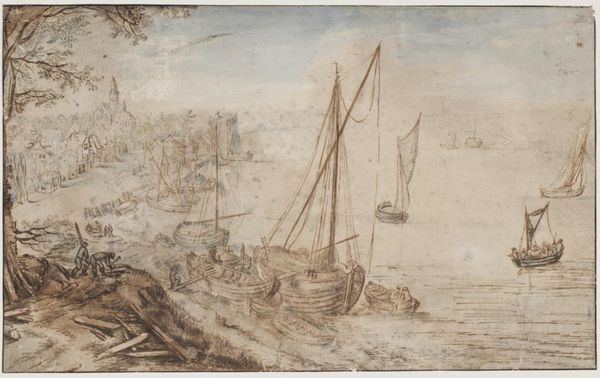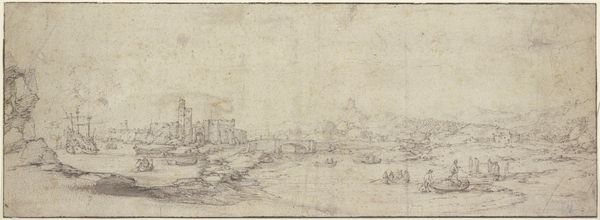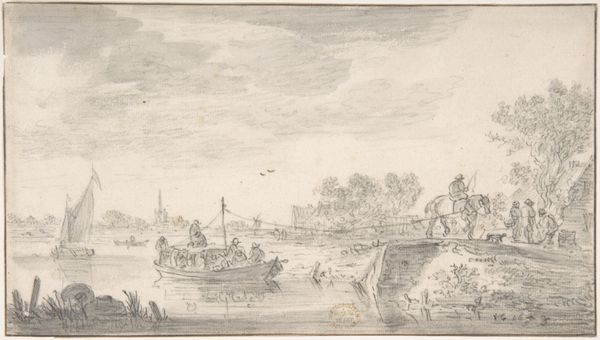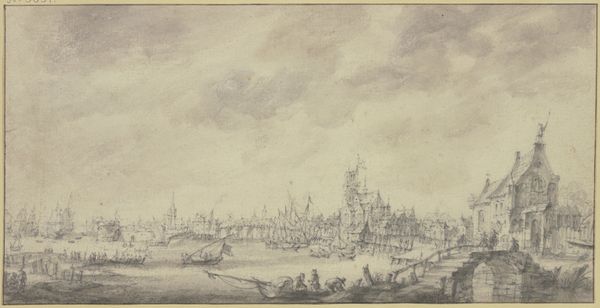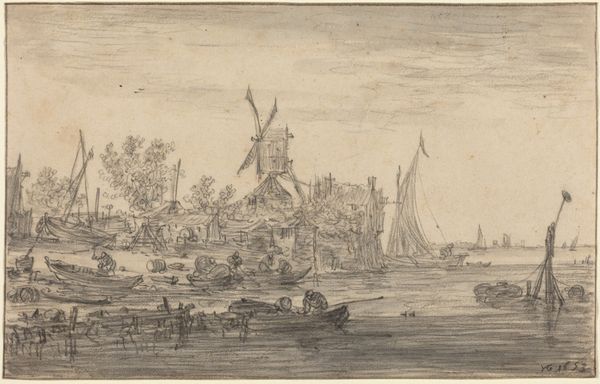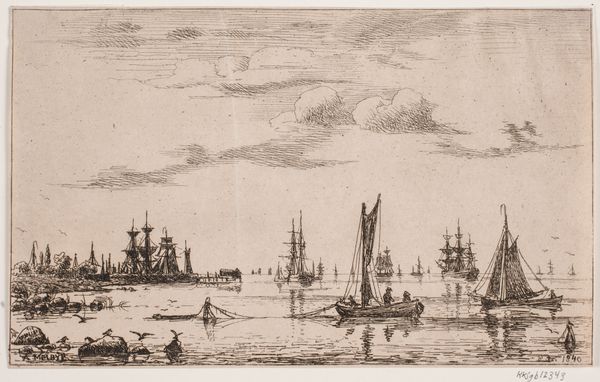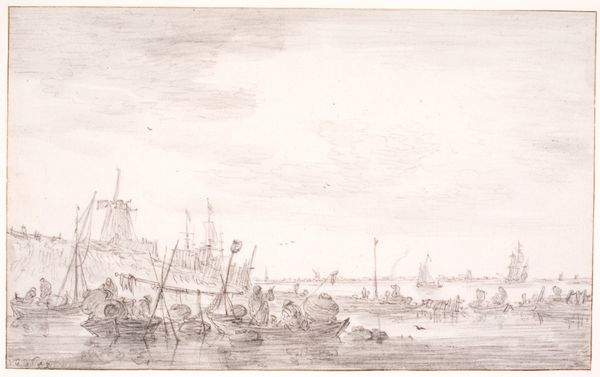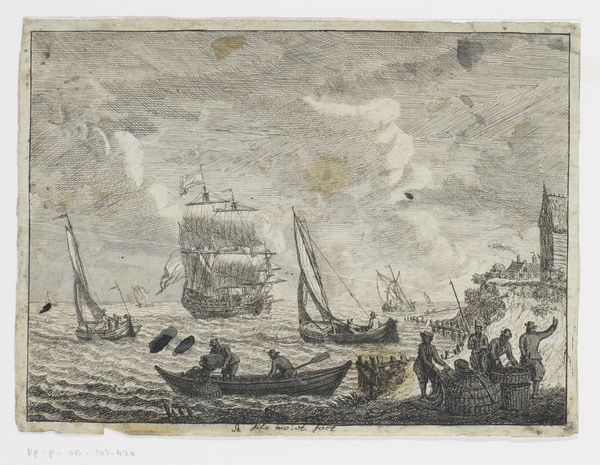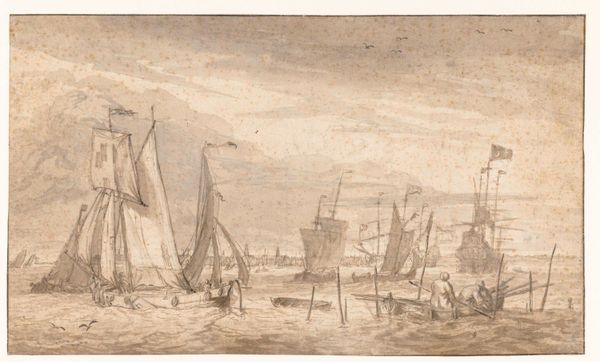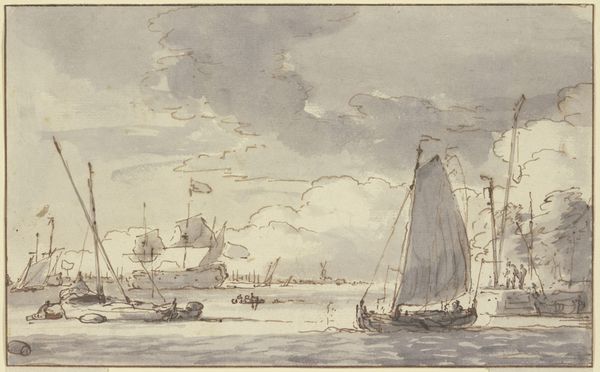
Marine, rechts große Felsen, vorn ein Maultiertreiber, im Hintergrunde eine Stadt
0:00
0:00
drawing, paper, ink, indian-ink
#
drawing
#
baroque
#
ink painting
#
landscape
#
paper
#
ink
#
indian-ink
#
cityscape
Copyright: Public Domain
Curator: This ink drawing on paper, “Marine, rechts große Felsen, vorn ein Maultiertreiber, im Hintergrunde eine Stadt” meaning, "Marine, to the right large rocks, in front a mule driver, in the background a city," comes to us from Claude Lorrain. It’s part of the collection here at the Städel Museum. Editor: Immediately, I'm struck by the delicate mood of this scene. There's a certain calmness, a vastness conveyed despite the relatively small scale of the work. Curator: Yes, Lorrain had a gift for imbuing even simple scenes with emotional resonance. Look at the use of line, the way he defines the forms. The ink washes are particularly effective in creating depth and atmospheric perspective. And think of what it is showing: A port, an entryway to somewhere with great potential, a driver with a mule. The symbol of labor paired with possibilities… Editor: Exactly, it speaks to this 17th century relationship to landscape as a space of both opportunity and potential danger, depending on the perspective. What is the experience of the maultiertreiber compared to the people who arrived to the port by way of boat? And the scale difference between humans and the natural setting emphasizes a sense of human insignificance amidst grander, uncontrollable forces, I feel. Curator: Absolutely. Lorrain’s Baroque style uses landscape to connect us to the sublime. The coastal scene serves as an allegorical stage for our understanding of nature's power. Each detail, even the distant cityscape, contributes to the overall sense of awe and contemplation. His imagery certainly had a cultural influence, embedding itself in European sensibilities, didn’t it? Editor: It's fascinating how seemingly neutral depictions of nature are laden with class, power, and even colonial aspirations of the era. Think about this specific type of coastal scene and who it would have attracted. Even today, the picturesque is loaded with longing, even as we are now experiencing some catastrophic climate change and environmental devastation to coastlines. I wonder what Claude Lorrain would think now. Curator: A poignant thought, certainly! Thinking of the visual history—it gives a great lens to understanding this art work even more fully! Editor: I completely agree, the act of examining something we think is settled shows the true, multi-layered qualities this work displays!
Comments
No comments
Be the first to comment and join the conversation on the ultimate creative platform.
